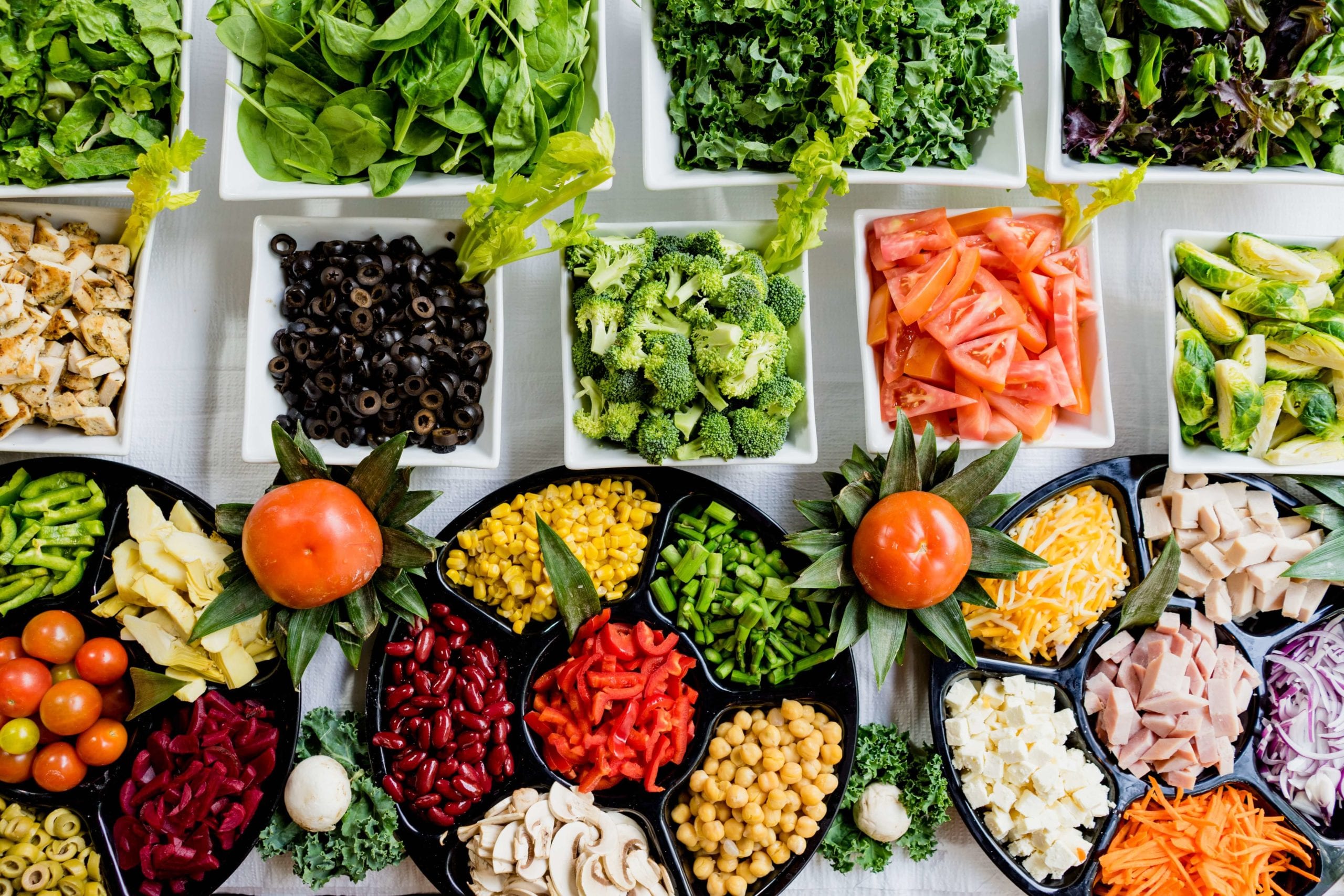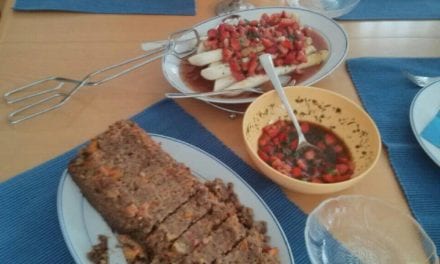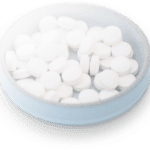Did you know...?
Our intestine

Table of contents
What role does our gut play?
It is clear isn't it? It is responsible for our digestion and compresses what we do not need to then excrete it. Boring but necessary. But surely not a topic of conversation.
The origin of health or illness lies in the intestine.
Suddenly so much interest in being taking in our gut
Many see it differently. In medical research, the gut and its inhabitants - the intestinal ecosystem - have been experiencing a real boom in interest for a few years now. Clearly, this organ does a lot more than just produce waste. Evidently our gut has many facets and it seems that they might have a significant impact on the treatment of many diseases
Giulia Enders describes the intestine in her book "Gut: The Inside Story of Our Body's Most Underrated Organ" as follows: "A fabulous being with great sensitivity, responsibility and willingness to perform". I'm pretty sure, if you hadn't known, you would never have thought we were talking about the gut. I can warmly recommend the book, it is written in a humorous and understandable way. In no way should we be ashamed of our gut and what it gets up to.
Let's unravel Giulia's description
A fabulous being
How are you today? The answer to that question depends very much on our gut. If it's not disturbed at work, it's an excellent networker. Its connecting pathways: our blood and lymphatic system. These pathways carry valuable information into our bodies everywhere. What does this information do? It induces the following:
- strengthen the body's defenses against intruders,
- mental balance,
- good, clear skin,
- Enough energy to face the challenges of the day.
Great sensibility
Hoards of useful bacteria (about 100 trillion) live in our gut. In one gram of faeces there are more bacteria than there are people living on earth. And that is a good thing! Every bacterium has its own task. Making sure each one does its job and the whole team works harmoniously is nothing short of a masterpiece. If the working conditions are good and all the tools in place, the shop runs like clockwork. The whole system is just about as sensitive as a swiss clockwork. It is medically called "gut microbiota". You can also say the gut flora. This is due to the fact that bacteria used to be assigned to the plant area.
This state living in our gut and the intestinal mucosa are challenged daily. Troublemakers can be:
- Chronic diseases (this is our current topic)
- Poor and unbalanced nutrition, also our lack of food culture - "grazing", "to go", fast-food, most of it: too heavy, too late and too acid
- Environmental influences - what type of birth, nutrition in early childhood, hygiene, infections, geographical situation
- Stress
- Medication, laxatives, gastric acid blockers, tranquillizers, cholesterol lowering drugs, painkillers and antibiotics
- Lack of exercise
- Exaggerated hygiene
If one or more of these troublemakers start to riot, we notice it very quickly. This condition is called dysbiosis. The balance in our gut is out of sync.
- Diarrhoea,
- Flatulence,
- Irritable Bowel Syndrome
- Constipation
are intestinal problems we already know. But the troublemakers could also be
- Allergies
- Neurodermatitis
- Diabetes
- Obesity
cause.
Our mental well-being is most likely related to our gut.
It's worth finding out which troublemakers are bothering us and getting rid of them.
Responsibility and willingness to perform
Within an average human life, about thirty tons of food and fifty thousand litres of liquid pass through our gastrointestinal tract. By comparison: an elephant weighs between four and five tons.
Our gut has a surface area of approx. 400 m². That is about 1.6 times the surface of a tennis court. How does this surface fit into our body? Anyone who has had the pleasure of having a colonoscopy has noticed that our gut is in many folds.
It is a 6-8 meter long muscle tube and thus our longest organ. That's about the length of an average motor home.
Inside our gut there is a state with 100 trillion inhabitants - all friendly bacteria.
70% of all immune cells are located in the small and large intestine. 80% of our immune defence takes place in the intestine. The intestine is one of the most important protagonists in our body's defence against pathogens.
More than half of all antibody-producing cells are in the intestinal wall. These cells can recognise foreign, unwanted substances. Not only that, they label them and destroy them. Then the information about these foreign substances is stored so that the body can react quickly when they show up again.
Happiness dwells in the gut, because 90% of the happiness hormone seratonin is produced in the intestine.
There are 100 to 150 million nerve cells in the intestinal nervous system - the enteric nervous system (enteron = intestine) ENS. These are internet connections so to speak - communication pathways in our body.
Our gut is connected to our brain via the vagus nerve. This is the intestinal-brain axis.
Our intestines not only break down food, they also provide energy, regulate water and salt content and produce vitamins and hormones. A multi-tasker, even though he's a male. (it works in German!)
Our gut is not a solo artist
I am always talking about about the intestines or the gut. It has several components, the small intestine, there are not so many bacteria here, otherwise important nutrients would be lost. The small intestine consists of the duodenum, the jejunum and the ileum. The bacteria reside in the large intestine. It consists of the appendix, the colon and the rectum.
Speaking of which, what about that appendix?
In the past, doctors thought it was a relic of evolution, without any significant function. Today they know that the appendix is also important for health. In its mucous membrane there are as many lymphocytes, as in the colon. It is believed to be a kind of shelter for important bacteria when we have diarrhoea. So the intestine can be quickly re-colonized with good bacteria again, after not only harmful bacteria but also good ones have been washed out when we are ill. Sometimes there is reason to remove it.
This podcast from radio station Bayern 2 explains how digestion works. It is in German.
Long live diversity in our intestines!
Our gut flora is as individual as our fingerprint. Unfortunately, it becomes more unstable with age. To date, about 1000 strains of bacteria have been identified in the intestine. It is important for our good gut feeling to have a variety of bacteria in the intestine.
What can we do to keep the clockwork running?
Eat prebiotic foods (foods with long-chain carbohydrates) e.g:
- Chicory,
- Artichokes,
- Bananas,
- Peas,
- fewer grains,
- Leeks,
- Onions,
- Garlic,
- Black salsifies,
- Parsnips and other similar vegetables
But please do not reintroduce them all at once, because they can be very flatulent.
Probiotics eat pro = for, bios = life
- Yoghurt without additives,
- Kefir (cow, sheep or goat)
- Sauerkraut
- Miso (Japanese spice paste)
- Pickles
- Kombucha (fermented tea)
- Cider vinegar
- Cheese
- Tempeh
- Kimchi
Eat less sugar or better stil none at all our bodies produce enough already!
Fibromyalgia - Eat well, feel better
In this TED talk, Ruairi Robertson, scientist. Field of research: The microbiome, talks about how the gut affects the brain.
"This is the first evidence of a change in the gut microbiome in non-visceral pain."
Dr Amir Minerbi, McGill University Health Centre in Montreal
So, I guess you are wondering what exactly the microbiome has to do with fibromyalgia.
In the future, the microbiome could play an important role in the diagnosis of fibromyalgia. A study conducted in Canada by pain specialist Dr. Amir Minerbi has found that fibromyalgia patients show an altered microbiome composition compared to healthy people. This means that researchers assume that there is a connection between the composition of the microbiome and fibromyalgia. Although it will be some time before further research shows how this could be incorporated into the treatment concept of fibromyalgia, these results may help to make the diagnosis of fibromyalgia more reliable. Today there is a high number of false diagnoses. This means that some patients with a fibromyalgia diagnosis actually suffer from other diseases that would be more easily treatable.
What these results can already be is an aid in refuting the claim that fibromyalgia does not exist.
Have a good trip!
My husband is working from home right now. That means we eat all our meals together. When we are about to sit down and I shout "Lunch is ready", he shows up with an appetite, even though he hasn't felt hungry all morning. The impressive journey or our food through our digestive tract begins with this call and the sight of food. So let´s give it a good send off and make our plates beautiful to the eye!
Then our food goes off through thick and thin and if all is well, it all turns out well at the end.
Updated: 14.08.2020
Sources:
Brown, K. B., DeCoffe, D. D., Molcan, E. M. & Gibson, D. L. G. (2012, August 4). Diet-induced dysbiosis of the intestinal microbiota and the effects on immunity and disease. PubMed.gov. https://pubmed.ncbi.nlm.nih.gov/23016134/
Enders, G. E. (2014). Charming Intestines - All about an underestimated organ (30th ed.). Ullstein.
Grillparzer, M. G. (2011). KörperWissen Discover your inner world (5th edition). Gräfe and Unzer.
Hill, D. A. H. & Artis, D. A. (2010). Intestinal Bacteria and the Regulation of Immune Cell Homeostasis. NCIB. https://www.ncbi.nlm.nih.gov/pmc/articles/PMC5610356/
Manych, M. M. & Vogel, G. V. (2010). Strong our immune system - How it protects us, how we support it (!. edition edition). TRIAS.
Blackthorn, J. S. & Ussar, S. U. (2016). The microbiome: influence on obesity and diabetes. aerzteblatt.de. https://www.aerzteblatt.de/archiv/177992/Das-Mikrobiom-Einfluss-auf-Adipositas-und-Diabetes
Stockert, K.S. (2020, March 25). Allergy, microbiome and other epigenetic factors. NCBI. https://www.ncbi.nlm.nih.gov/pmc/articles/PMC7123400/
Brauser, D. B. (2019, July 15). Fibromyalgia: Study provides evidence of the importance of the intestinal microbiome - nutrition as a therapeutic approach? medscape.com. https://deutsch.medscape.com/artikelansicht/4908056?nlid=130670_3081&src=WNL_mdplsnews_190715_MSCPEDIT_DE&uac=207593DX&faf=1#vp_1











